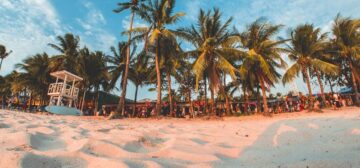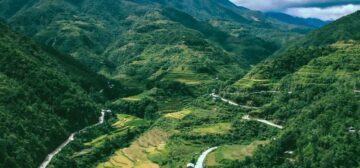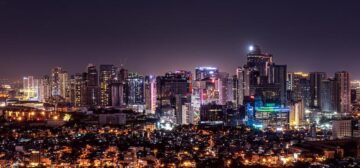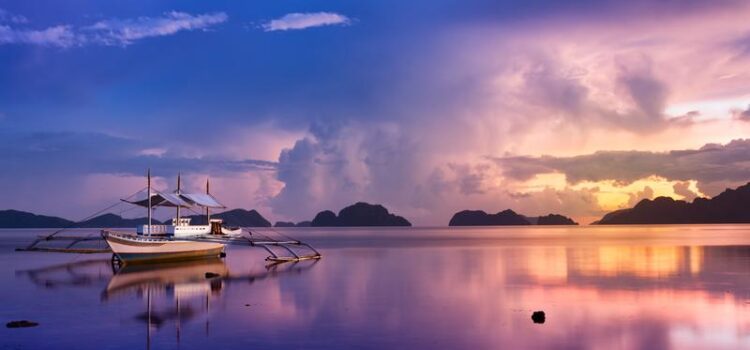AirDomestic flights in the Philippines are operated by Philippine Airlines (www.philippineairlines.com), Cebu Pacific (www.cebupacificair.com), Air Asia (www.airasia.com) and Seair (www.flyseair.com).Flying is one of the most efficient ways of getting around and is also reasonably affordable. Other than Manila, the only major hub is Cebu City. Important regional airports include Laoag and Tuguegarao (in North Luzon), Legazpi (in South Luzon), Puerto Princesa (in Palawan) and Davao (in Mindanao). A handful of places can be reached only by air, notably the Batanes islands off the north coast of Luzon.It is essential to book in advance at Easter, All Saints’ Day and All Souls’ Day (1–2 November), Christmas and New Year, and on routes run only by SEAIR as they typically use small planes.Departure taxUsually included in the air fare.RoadRoad conditions and traffic make driving in much of the country (particularly the cities) stressful at best. Defensive driving is essential, as is patience for dealing with queues of traffic in urban areas.Roads spread among the islands, with highways on the Mindanao, Visayas and Luzon island groups. Driving off the main highway at night is dangerous and should be avoided.Side of the roadRightCar HireCar hire is available in Manila and in major cities, with offices in airports and occasionally in large business hotels. It’s common to hire a car with a driver, particularly to tackle Manila’s busy traffic, and it’s also possible to hire taxis by the day.TaxiTaxis are available in cities and in many towns. Make sure meters are used, as some taxi drivers will otherwise set an exorbitant and arbitrary rate. It’s very common to be asked for ‘meter plus fifty Pesos’ or similar; either accept it or wait for another vehicle.CoachThe Filipino islands are serviced by dozens of private bus companies of various sizes, running buses ranging from a/c comfort with toilets to barely functioning rust buckets. There is no central information service for buses, and in many towns and cities different companies have their own terminals. Phone lines also tend to be unhelpful, so the best bet is to enquire about routes and times at hotels.RegulationsThe minimum driving age is 18. Seat belts are compulsory, although this is widely ignored by locals.Private vehicles are banned from most roads in the capital between 0700 and 1900 for one day a week. This procedure depends on the vehicle’s licence plate (for example, plates ending in 1 or 2 are banned on Mondays).DocumentationYou can use a foreign driving licence for up to three months after arrival, after which an International Driving Permit is required. You must carry the licence or permit with you when driving.Urban travelIn most towns and cities, transport comes in three forms: tricycles, pedicabs and jeepneys.Tricycles (motorbikes with sidecars) hold up to five people and are most useful for short distances. Locals commonly share the journey with strangers and pay a per-person rate. Tourists are often assumed to want private hire and may therefore pay for the whole vehicle. It’s still a cheap way to get around, but negotiate a price in advance.Pedicabs often look similar but are engineless and pedalled by the operator. Jeepneys, once adapted from US army jeeps, are now purpose built. They follow fixed routes with fees dependent on the length of the journey. Manila’s Metro Rail Transit (MRT) connects North Avenue in Quezon to Taft Avenue in Pasay City. The Light Railway Transit (LRT) has two lines. The yellow line runs north to south from Baclaran terminal to Roosevelt on North Avenue; the purple line runs from west to east, from Recto in the Santa Cruz district to Santolan. Calseas (horse-drawn carriages) are common in parts of downtown Manila. The best place to try one is around Intramuros where drivers usually stick to the stated prices. Calesas are also available in a few other places, notably Vigan.RailPhilippine National Railways is the sole train operator. Its single operational line, Main Line South, runs infrequent services across Southern Luzon to Legaspi via Calamba and Naga. The journey takes around 10 hours but bus services are quicker and more comfortable.WaterThe islands of the Philippines are connected by an intricate network of ferry services, ranging from small bangkas (outrigger boats) to large liners. In many places (particularly the Visayas) they are the only way to get around and see the sights. Erratic timetabling is common, and avoid overcrowded ships (particularly in bad weather).





